How to choose the right twin-shaft shredder?
How to choose the right twin-shaft shredder?
Choosing the right twin-shaft shredder requires a combination of factors to ensure that the equipment can meet the specific application needs and achieve efficient and economical operation. The following are the key factors to consider when choosing the right twin-shaft shredder:
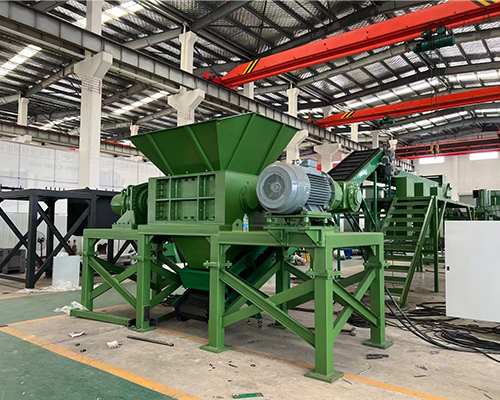
Material characteristics:
Type and size: Determine the specific type of material to be shredded (such as plastic, metal, wood, etc.) and its maximum size. Different types of materials may require knives of different designs or materials.
Hardness and density: Evaluate the hardness and density of the material, which will affect the power configuration of the required shredder and the choice of blades.
Output requirements:
Choose a shredder that suits the production capacity based on the amount of material that needs to be processed per day or hour. Too low a capacity will lead to inefficiency, while too high a capacity may lead to waste of resources.
Output size requirements:
Clarify the size requirements of the material after shredding, because different applications have different specification restrictions on the final product. Generally speaking, smaller output sizes increase the cost of shredding.
Feeding method:
Consider what feeding method is used (manual feeding, automatic feeding system), which will affect the efficiency and ease of operation of the shredder.
Tool selection:
Choose a tool material and shape that is suitable for the characteristics of the material being processed. High-quality tools can improve the shredding effect, extend the service life, and reduce maintenance costs.
Manufacturer strength and service:
Select an experienced and reputable manufacturer, and examine its technical support capabilities and after-sales service network. On-site visits to factories or existing project cases can help understand the actual situation.
Additional functions:
Decide whether to add auxiliary equipment according to actual needs, such as feed conveyors, iron removers, intelligent dust reduction systems, remote monitoring systems, etc., which can enhance the overall performance of the system.
Safety and environmental protection:
Confirm that the shredder is equipped with necessary safety devices, such as emergency stop buttons, protective covers, etc.; At the same time, pay attention to environmental protection measures in terms of noise control and dust management.
Budget and cost-effectiveness:
Compare the prices of different brands and models while ensuring quality, and find the product with the best cost-effectiveness. Don't make decisions based solely on price, but consider the total cost of ownership for long-term use.
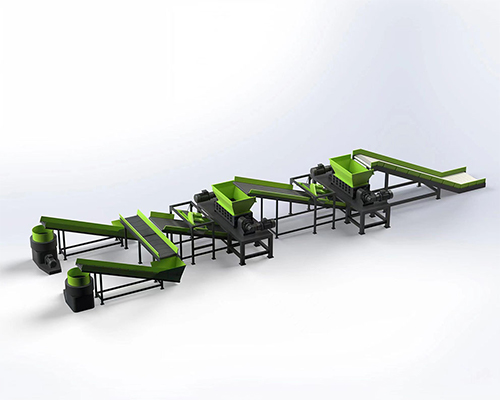
| Model | 600 | 800 | 1000 | 1200 | 1400 | 1600 | 1800 |
| Motor(kw) | 11*2 | 18.5*2 | 35*2 | 45*2 | 55*2 | 75*2 | 110*2 |
Reducer | P6-P7 | P7-P8 | P8-P10 | P10-P12 | P11-P13 | P12-P16 | P14-P16 |
| Siemens or other motors, planetary reducers or other reducers can be customized according to customer requirements | |||||||
| Rotation Speed | 8-20rmp | 8-20rmp | 8-15rmp | 8-15rmp | 8-15rmp | 8-12rmp | 8-12rmp |
| Blades Diameter | 220-320 | 260-320 | 260-400 | 400-500 | 400-500 | 500 | 500 |
| Blades material | The material of the blades (55sicr, 5crsi, 9crsi, skd11, m6v, h13) can be customizedaccording to the customer's actual usage | ||||||
| Feeding Size | 1200*900mm | 1400*1000mm | 1600*1200mm | 1800*1300mm | 2000*1300mm | 2200*1700mm | 2400*2000mm |
| The size and appearance of the feeding hopper can be customized according to thecustomer's feeding situation | |||||||
| Weight(kg) | 1800 | 2500 | 3700 | 5500 | 7500 | 9500 | 13000 |
-
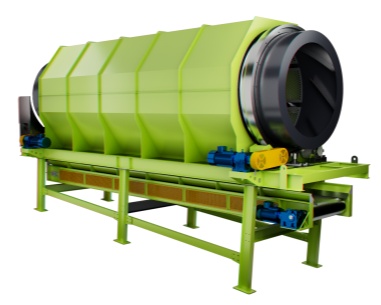 Trommel screenTrommel screen, also known as drum screens, are widely used in various industries for sorting and separating materials.Get Quote
Trommel screenTrommel screen, also known as drum screens, are widely used in various industries for sorting and separating materials.Get Quote -
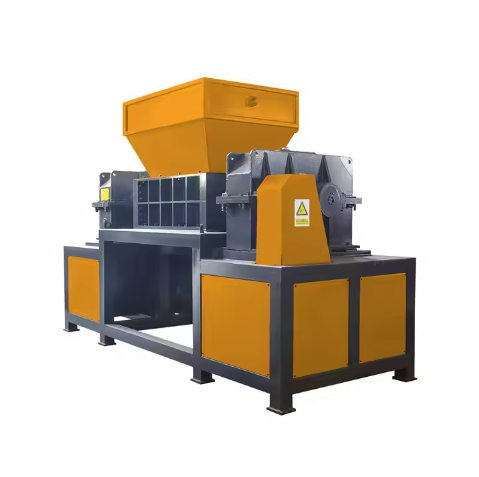 Crop straw double shaft shreddApplications:Biomass Energy Production: Shredded straw can be used as a feedstock for bioenergy plants to produce electricity or heat.Livestock Feed: Reduced-si...Get Quote
Crop straw double shaft shreddApplications:Biomass Energy Production: Shredded straw can be used as a feedstock for bioenergy plants to produce electricity or heat.Livestock Feed: Reduced-si...Get Quote -
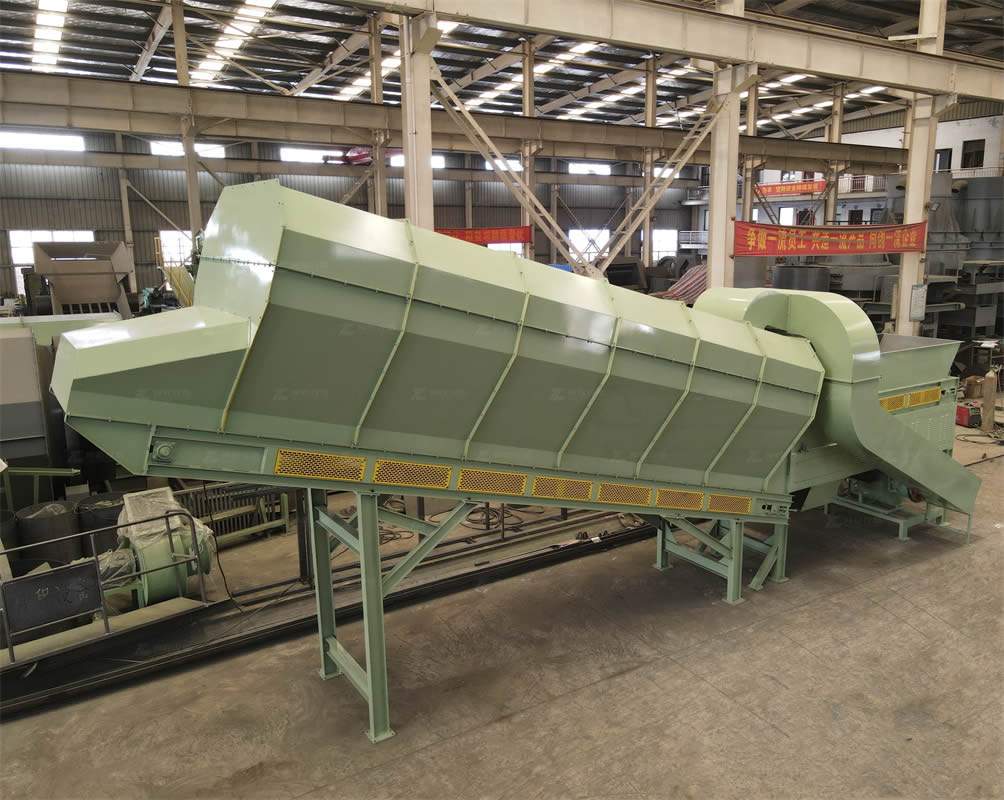 Zhongcheng Air Drum SeparatorAir drum separators effectively separate lightweight materials (e.g., plastics, paper) from heavier materials (e.g., metals, glass). This high efficiency is cru...Get Quote
Zhongcheng Air Drum SeparatorAir drum separators effectively separate lightweight materials (e.g., plastics, paper) from heavier materials (e.g., metals, glass). This high efficiency is cru...Get Quote
-
2024-08-06Plastic double shaft shredderOperation:Feeding: The plastic material is fed into the shredder through the infeed system.Shredding: As the material enters the shredding chamber, the rotating...
-
2024-05-29Landfill stale garbage screening projectAfter communicating with our domestic customers in Shandong Province, we learned that he needed to dispose of the garbage in the landfill through excavation, sc...
-
2024-08-16Crop straw double shaft shredderApplications:Biomass Energy Production: Shredded straw can be used as a feedstock for bioenergy plants to produce electricity or heat.Livestock Feed: Reduced-si...
-
2023-01-12Waste FeederWaste feeder was specially designed to optimize municipal solid waste sorting systems. The Drum Feeder ensures that your sorting system, baler or shredder has a...
-
2024-06-08Five factors influencing the output of a drum screen.The input efficiency and separation efficiency of the drum screen are controlled by the screen hole size, drum screen diameter, rotation speed, baffle type and ...



